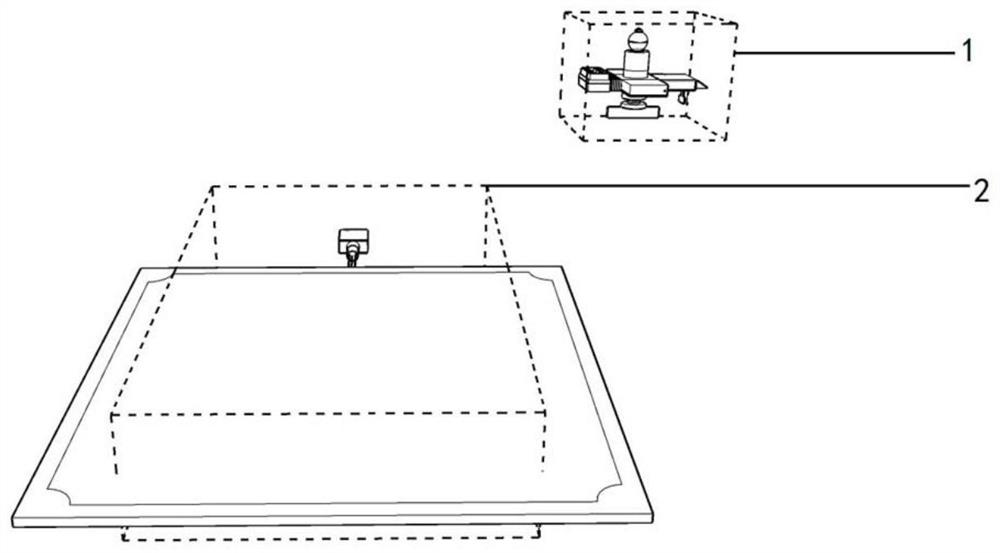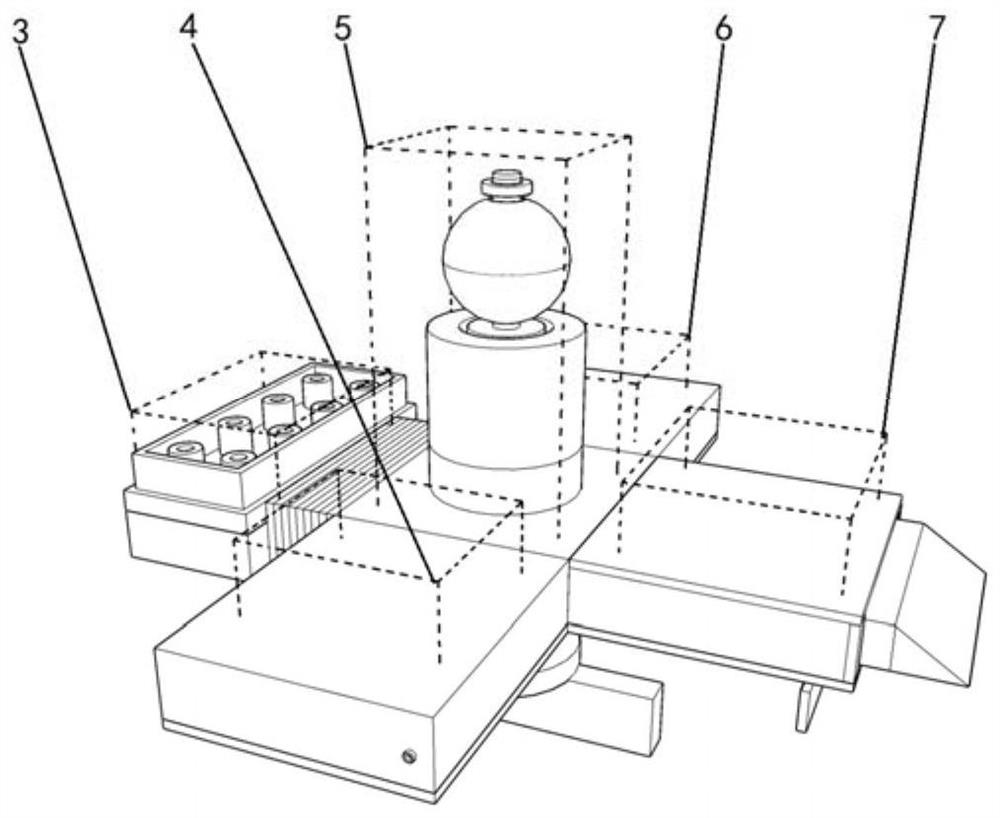Wireless induction type compensator interlocking device adaptive to externally-hung medical accelerator
A wireless sensing and interlocking device technology, applied in the field of medical devices, can solve problems such as increased risk of compensator forgetting, high pressure for radiotherapy technicians to review, uneven distribution of dose curves, etc., to achieve simple operation, adaptability and promotion High performance and improved adhesion
- Summary
- Abstract
- Description
- Claims
- Application Information
AI Technical Summary
Problems solved by technology
Method used
Image
Examples
Embodiment 1
[0066] Embodiment 1 A wireless inductive compensator interlocking device adapted to an external medical accelerator
[0067] refer to figure 1 , The purpose of the present invention is to overcome the deficiencies and loopholes existing in the prior art, and provide an interlocking device for tissue compensation. The device consists of a connecting assembly 1 and a compensator assembly 2 . The two need to be adapted to the existing plug-in medical electron linear accelerator for use, and the specific composition and mutual relationship of the two will be described later.
[0068] refer to figure 2 , the connecting component 1 is a plug-in device installed on the head (collimator) of an external electronic linear accelerator. The device is a structural member connecting the accelerator and the compensator assembly 2 . The connection assembly 1 is composed of a composite plug assembly 3, a power supply box assembly 4, an expansion assembly 5, an action box assembly 6 and a ...
Embodiment 2
[0077] Example 2 Using the invention (taking "Elekta" brand medical electron linear accelerator as an example)
[0078] The first step of hardware installation: the connecting component 1 is combined with the head (window for emitting rays) of the external medical electron accelerator. The handpiece auxiliary device of the Elekta accelerator adopts the external hanging type. Generally, there are few opportunities for the auxiliary device to be used in clinical treatment, and there is no auxiliary device attached to the handpiece. Auxiliary devices are often used during machine maintenance, and auxiliary devices are temporarily added to the machine head at this time. First, the location distribution of the components involved in the Elekta accelerator is introduced. refer to Figure 40 and Figure 41 , the beam-out part of the existing Elekta accelerator includes a handpiece 112, a frame 119, a collimator 113, and the like. The circular panel collimator 113 is the radiation...
Embodiment 3
[0086] Example 3: Comparison with existing methods
[0087] Table 1
[0088]
PUM
 Login to View More
Login to View More Abstract
Description
Claims
Application Information
 Login to View More
Login to View More - R&D
- Intellectual Property
- Life Sciences
- Materials
- Tech Scout
- Unparalleled Data Quality
- Higher Quality Content
- 60% Fewer Hallucinations
Browse by: Latest US Patents, China's latest patents, Technical Efficacy Thesaurus, Application Domain, Technology Topic, Popular Technical Reports.
© 2025 PatSnap. All rights reserved.Legal|Privacy policy|Modern Slavery Act Transparency Statement|Sitemap|About US| Contact US: help@patsnap.com



